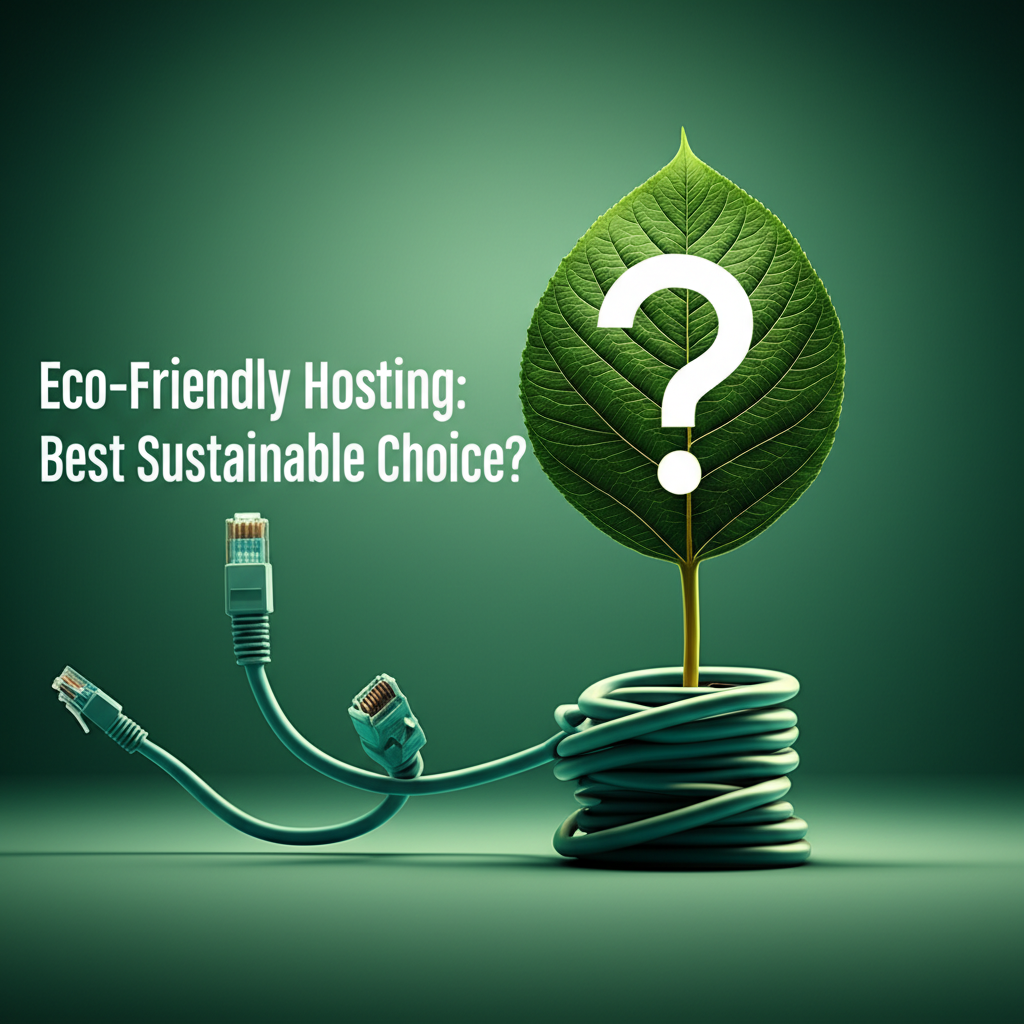- Understanding Eco-Friendly Hosting Practices
- The Advantages of Choosing Eco-Friendly Hosting
- Eco-Friendly Hosting: Navigating Potential Drawbacks
- Choosing the Right Eco-Friendly Host: Key Considerations
Eco-Friendly Hosting: Best Sustainable Choice?
Eco-friendly hosting is becoming increasingly popular as individuals and businesses alike recognize the importance of reducing their environmental impact. But is it truly the best sustainable choice? With the digital world expanding at an exponential rate, so too does its energy consumption. Data centers, the backbone of the internet, require vast amounts of power to operate 24/7, contributing significantly to global carbon emissions. Choosing a web host committed to sustainability is no longer a niche concern, but a crucial step towards a greener future for the online world. This article explores the concept of eco-friendly hosting, its benefits, potential drawbacks, and how to choose a truly green provider.
Understanding Eco-Friendly Hosting Practices

What exactly makes a hosting provider “eco-friendly?” It boils down to their commitment to minimizing their environmental footprint through various sustainable practices. These practices can include:
Renewable Energy: Many green hosts power their data centers with renewable energy sources such as solar, wind, hydro, or geothermal power. This significantly reduces their reliance on fossil fuels and minimizes carbon emissions. Look for providers that are certified by reputable renewable energy organizations.
Carbon Offsetting: Some companies invest in carbon offsetting projects to compensate for the emissions they haven’t yet eliminated entirely. These projects can include reforestation initiatives, methane capture programs, and investments in renewable energy development.
Energy-Efficient Infrastructure: Utilizing energy-efficient hardware and software is another key component of eco-friendly hosting. This includes using servers optimized for low power consumption, employing virtualization technologies to maximize server utilization, and implementing efficient cooling systems in data centers.
Waste Reduction: Responsible e-waste management and recycling programs are essential for minimizing the environmental impact of discarded hardware. Look for providers that prioritize responsible disposal and recycling of their equipment.
Green Certifications: Third-party certifications from reputable environmental organizations can provide assurance that a hosting provider is genuinely committed to sustainable practices. Look for certifications like Green-e, Energy Star, and others specific to the hosting industry.
The Advantages of Choosing Eco-Friendly Hosting
Opting for eco-friendly web hosting offers numerous advantages, including:
Reduced Carbon Footprint: The most significant benefit is the reduction of your website’s contribution to greenhouse gas emissions. By supporting companies utilizing renewable energy, you are actively participating in a cleaner digital landscape.
Support for Sustainable Practices: Choosing eco-friendly hosting sends a clear message to the industry that sustainability matters. Your patronage encourages other companies to adopt environmentally responsible practices.
Improved Brand Image: Demonstrating a commitment to environmental responsibility can enhance your brand image and attract environmentally conscious customers. Many consumers are increasingly seeking out businesses that align with their values.
Long-Term Cost Savings: While not always the case, energy efficiency can translate into lower operating costs for the hosting provider, which can, in turn, lead to competitive pricing for consumers.
Contributing to a Greener Future: By choosing eco-friendly hosting, you’re contributing to a larger movement towards a more sustainable future for the digital world. This collective effort can have a significant positive impact on the environment.
Eco-Friendly Hosting: Navigating Potential Drawbacks
While the benefits of eco-friendly hosting are compelling, it’s important to be aware of potential drawbacks:
Cost: Eco-friendly hosting can sometimes be slightly more expensive than traditional hosting options due to the investment in renewable energy and sustainable infrastructure. However, this price difference is often minimal and shrinking as renewable energy becomes more affordable.
Greenwashing: Unfortunately, some companies engage in “greenwashing,” making misleading claims about their environmental commitment. It’s crucial to thoroughly research a provider’s practices and look for verifiable certifications before making a decision.
Limited Options: The eco-friendly hosting market is still developing, so the number of providers may be smaller than traditional hosting options. However, the selection is growing rapidly as demand increases.
Choosing the Right Eco-Friendly Host: Key Considerations
When selecting an eco-friendly hosting provider, consider the following factors:
Transparency: Look for providers that are transparent about their environmental practices. They should clearly outline their energy sources, carbon offsetting programs, and other sustainability initiatives.
Certifications: Verify their claims with reputable third-party certifications.
Data Center Location: The location of the data center can impact its environmental footprint. Consider providers with data centers in regions with access to renewable energy sources.
* Customer Support: Ensure the provider offers reliable customer support in case of technical issues.
Eco-friendly hosting is a significant step towards a more sustainable digital future. By carefully evaluating your options and choosing a provider truly committed to environmentally responsible practices, you can minimize your website’s environmental impact and contribute to a greener internet for everyone.











Leave a Reply